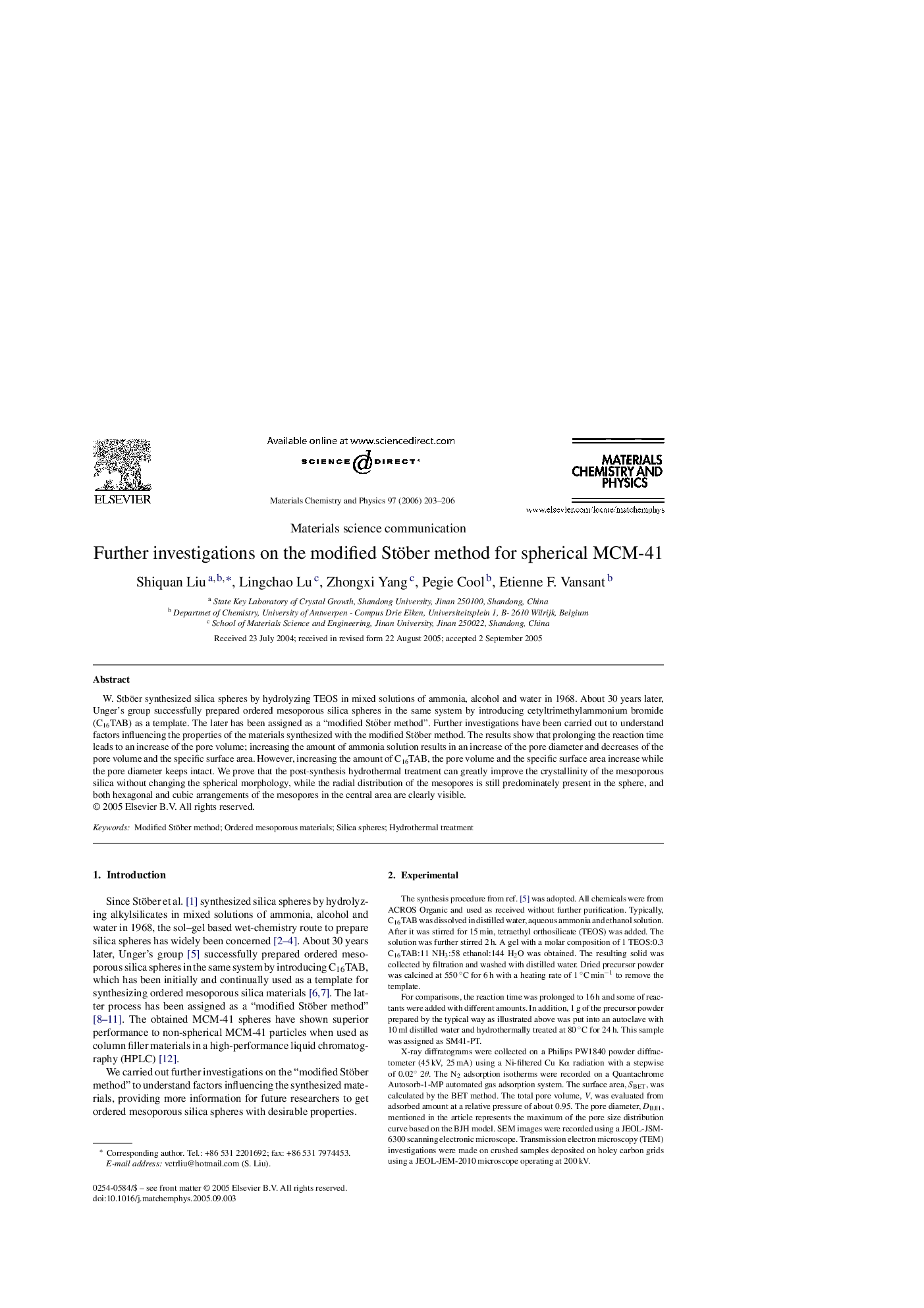| Article ID | Journal | Published Year | Pages | File Type |
|---|---|---|---|---|
| 1528276 | Materials Chemistry and Physics | 2006 | 4 Pages |
Abstract
W. Stböer synthesized silica spheres by hydrolyzing TEOS in mixed solutions of ammonia, alcohol and water in 1968. About 30 years later, Unger's group successfully prepared ordered mesoporous silica spheres in the same system by introducing cetyltrimethylammonium bromide (C16TAB) as a template. The later has been assigned as a “modified Stöber method”. Further investigations have been carried out to understand factors influencing the properties of the materials synthesized with the modified Stöber method. The results show that prolonging the reaction time leads to an increase of the pore volume; increasing the amount of ammonia solution results in an increase of the pore diameter and decreases of the pore volume and the specific surface area. However, increasing the amount of C16TAB, the pore volume and the specific surface area increase while the pore diameter keeps intact. We prove that the post-synthesis hydrothermal treatment can greatly improve the crystallinity of the mesoporous silica without changing the spherical morphology, while the radial distribution of the mesopores is still predominately present in the sphere, and both hexagonal and cubic arrangements of the mesopores in the central area are clearly visible.
Related Topics
Physical Sciences and Engineering
Materials Science
Electronic, Optical and Magnetic Materials
Authors
Shiquan Liu, Lingchao Lu, Zhongxi Yang, Pegie Cool, Etienne F. Vansant,
